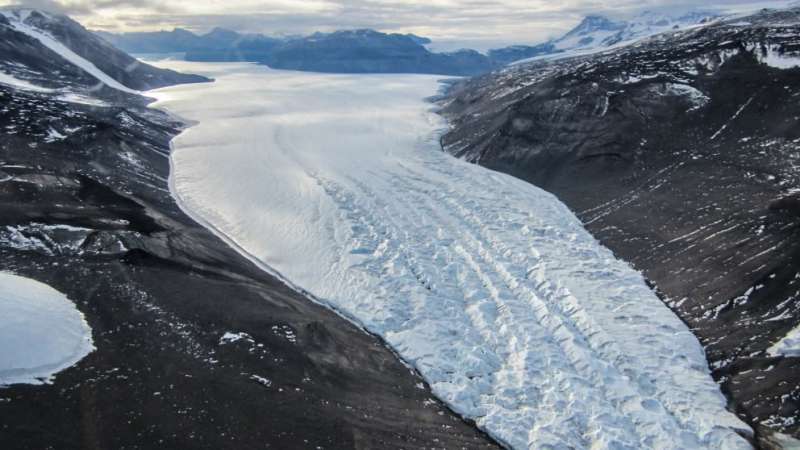Tracing subglacial water storage

Glaciers are essential to both human and animal health. In fact, 70 percent of the world's population consumes water that has some glacial input. It's important to understand how these icy giants operate, because they impact downstream ecosystems.
Carli Arendt, an assistant professor of marine, earth and atmospheric sciences at NC State, wants to understand how water moves through glaciers; specifically, how long subglacial water may be stored.
Normally, scientists use dyes to determine how long water is stored in a glacier. They put the dye on the surface of a glacier during the melt season and measure how long it takes for it to show up in the stream below. However, this method really only shows transit time – how long water can take to move from the surface of a glacier to the bottom – it doesn't address subglacial storage.
Subglacial water refers to the water stored at the bottom of the glacier, where the ice may come into contact with bedrock. Because it's very difficult to access this area, there hasn't been a direct method of measuring how long subglacial water can be stored.
Arendt is looking to change that. With colleagues from the University of Michigan (where Arendt began the study as a graduate student) and the University of Wyoming, she recently conducted a proof-of-concept study on a method for calculating subglacial water storage times.
Arendt measured naturally occurring, harmless uranium isotopes (U-238 and U-234) in samples of meltwater she collected from the subglacial system of the Athabasca Glacier in Canada. Over time, the uranium isotopes decay into "daughter" products, such as radon 222. By looking for the presence of daughter products in the meltwater, Arendt was able to calculate how long that water had been stored in the subglacial system.
Arendt also looked for the presence and concentration of natural elements such as phosphorus and nitrate in the meltwater to determine how long that meltwater has been able to interact with underlying bedrock. Over time, bedrock can partially dissolve into meltwater and the friction between ice at the bottom of the glacier and the bedrock beneath it can weather the bedrock. Both processes enrich the water with mineral salts.
As the water samples became more dilute, Arendt could determine that the water had less contact time with the bedrock, helping her to calculate storage time. As a result Arendt and her colleagues were able to record direct evidence of subglacial storage times decreasing during peak melt season.
But subglacial meltwater and the minerals it contains do more than help calculate storage. Those minerals can affect the life cycles of animals living downstream. For example, salmon in Alaska benefit from subglacial water that has higher levels of nitrate and phosphorus. Those nutrients are released into the water at specific points during the melt season, so salmon spawns are timed to coincide with those melts. Salmon health is tied directly to glacial health.
"Glaciers are a key player in our ecosystems," Arendt says. "They recharge aquifers and provide nutrients wildlife need to survive. As the climate changes, understanding the impact on glaciers and ice sheets will help us address water quality and supply issues."
The research appears in Chemical Geology.
More information: Carli A. Arendt et al. Seasonal progression of uranium series isotopes in subglacial meltwater: Implications for subglacial storage time, Chemical Geology (2017). DOI: 10.1016/j.chemgeo.2017.07.007
Journal information: Chemical Geology
Provided by North Carolina State University

















